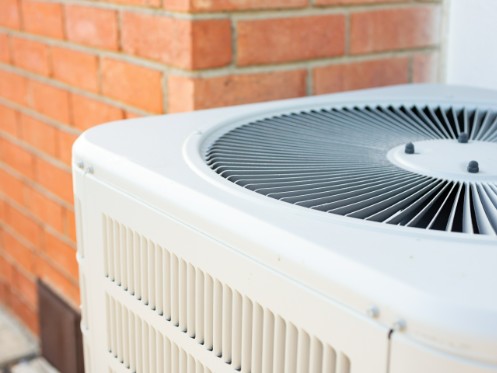January 18, 2024

How to Choose Between Central AC and Mini-Split AC Systems
If you’re considering installing an air conditioning system in your St. Louis, MO, home, your choice will likely come down to one of two types of systems. One is a central air conditioning system, and the other is a mini-split AC system. Each comes with specific advantages as well as specific drawbacks. That often makes choosing between them quite difficult. To help, here is everything you need to know about central AC and mini-split AC systems and how to choose the right option for your home.
The Advantages of Central AC
Here in St. Louis, just like in the rest of the US, central AC systems are the most common type of air conditioning equipment in homes. At last count, approximately two-thirds of American homes had a central AC or central heat pump installed. That isn’t an accident. It began in the post-World War II period, as builders began preinstalling ductwork in new homes to support central HVAC equipment.
Central AC’s popularity in the US happened because it offered an efficient way to cool an entire home that was compatible with a central heating system like a gas-fired furnace. In that configuration, the two systems could share common ductwork, a common blower unit, and a single thermostat. For homeowners, it meant setting a single temperature and letting the HVAC do the rest.
Central AC systems also make very little noise, especially if your home has room to install the system’s indoor unit away from your living spaces. They also do a decent job of keeping the air in your home fresh and dust-free because they recycle your home’s air through an air filter whenever they’re operating. And all of those benefits come with reasonable price tags, with the average central AC system costing $5,850, including installation.
The Disadvantages of Central AC
Even though central AC systems dominate the residential cooling market here, they do come with some significant disadvantages. For one, even though they’re efficient, central AC systems will increase your home’s electricity bills significantly in the summer. Plus, they can sometimes create hot and cold spots in your home if some spaces have different cooling needs than others.
Central AC systems also require you to take great care of your home’s ductwork. This includes regular cleanings to prevent the buildup of dust and dirt that could end up recirculating in your air. And it also includes occasional inspections to make sure your ducts don’t develop any air leaks. Should that happen, it could compromise your central AC’s efficiency and its ability to keep your home cool.
The Advantages of Mini-Split ACs
Although they may seem like a recent innovation to St. Louis residents, mini-split ACs aren’t anything new. They first appeared in Japan in the late 1950s, when Mitsubishi designed the first one to fit in the country’s tight residential spaces. Mini-splits, unlike central AC systems, require no ductwork and include a single small outdoor unit and multiple indoor air handlers.
The configuration of a mini-split AC makes it capable of doing some things that a central AC can’t. For example, you can set a different temperature on each indoor air handler, which gives you more precise control of temperatures in your home. Plus, you can turn off individual air handlers entirely, so you can save money by not cooling spaces you’re not using.
A mini-split’s lack of ductwork also makes it far more efficient than a central AC. Some estimates indicated that ducted systems waste up to 30% of the energy they consume via ductwork-related losses. Additionally, most mini-split AC systems make use of inverter technology and variable-speed compressors and fans so they can scale back electricity usage to fit your exact comfort needs.
The Disadvantages of Mini-Split ACs
Mini-splits aren’t a perfect solution, however. For one thing, they cost significantly more to buy and install. Depending on how many indoor air handlers your home requires, total costs can reach $10,000 or more. And, if you have an especially large home, you may even need more than one system. A single mini-split can only support a maximum of eight zones.
Plus, the way your mini-split AC gets installed can play a huge role in how well it works for you. Only a seasoned installer can choose the perfect locations for your indoor air handlers so they effectively and efficiently cool your home. And even then, you’ll have to live with those air handlers, which might clash with your home’s decor and aren’t something you can easily hide.
You will also have to get used to cleaning multiple air filters regularly, as each of your air handlers will have its own. Plus, each air handler will need periodic maintenance to keep it working well. That can significantly increase your total cost of ownership compared with a central AC system.
Choosing Between a Central AC and a Mini-Split AC
Generally speaking, your choice between a central AC system and a mini-split AC will come down to a few simple factors. The first is whether your home has preexisting ductwork that’s sufficient to support the central AC you want. Installing ductwork in already-finished walls is expensive and disruptive. So, if your home needs new ductwork or significant ductwork upgrades to support a central AC, a mini-split is likely the better choice. At that point, the two would be cost-competitive, and the mini-split would cost less to run.
However, if your home already has the right ductwork or you already have a central AC that you intend to replace, a central AC system is likely the right choice. It will keep your up-front costs to a minimum and will provide similar or better comfort compared to your older system. It may even remain interoperable with your home’s heating system, saving you the trouble of having to replace that, too.
Of course, you could always use a mini-split to add air conditioning to spaces in your home that didn’t already have it, like a basement or an addition. Nothing is stopping you from running one in parallel with your home’s central AC system. This is an excellent way to expand your home’s HVAC coverage without making significant alterations to your home’s existing ductwork.
No matter which type of system you choose, however, Scott-Lee Heating Company can help. We’ve served homeowners in St. Louis since 1978, offering complete HVAC installation, maintenance, and repair services. And as a 26-time recipient of the Dave Lennox award, you can trust that we’re the finest AC installers in the business. We also offer indoor air quality solutions, metalwork, HVAC zoning systems, and geothermal systems, too. And if you own a business in the area, we also work on commercial HVAC systems. We even offer financing on approved credit to help you better afford the central AC or mini-split AC system your home needs. So, when you need a new AC system installed in your St. Louis home, contact Scott-Lee Heating Company right away.
